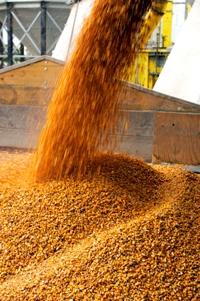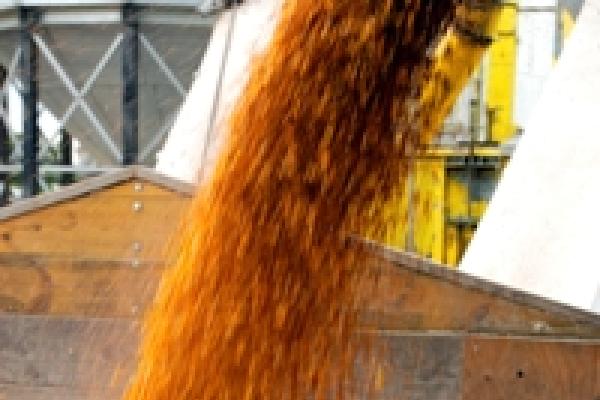
Francis Vrettos
Published: September 01, 2009

In the recent case of Bunge SA v ADM Do Brasil Ltda and Ors (The “Darya Radhe”) [2009] EWHC 845 (Comm), the High Court was asked to revisit the principles governing a shipper’s obligation not to ship dangerous cargo.
On its face, the decision in this case is at odds with the leading authority on dangerous cargo - The "Giannis NK" - in which, more than a decade ago, the House of Lords concluded that a shipment of ground-nut pellets infested with beetles was dangerous cargo for the purposes of Art IV, r. 6 of the Hague Rules. The decision in The "Darya Radhe" was that a cargo of soyabean meal pellets infested with live rats was not “dangerous” within the meaning of Art IV, r. 6 of the Hague Rules. Article IV rule 6 of the Hague Rules provides:
"Goods of an inflammable, explosive or dangerous nature to the shipment whereof the carrier, Master or agent of the carrier has not consented with knowledge of their nature and character, may at any time before discharge be landed at any place, or destroyed or rendered innocuous by the carrier without compensation and the shipper of such goods shall be liable for all damages and expenses directly or indirectly arising out of or resulting from such shipment…"
However, the reasoning in both cases follows the same principles.It is on the facts that The "Darya Radhe" differs from The "Giannis NK".
The "Darya Radhe" decision presents an opportunity to review both cases. Before so doing it is though worth summarising the facts and decision in The "Giannis NK".
In The "Giannis NK" the vessel loaded a cargo of wheat pellets in two holds for carriage from West Africa to San Juan, Puerto Rico. A cargo of ground nut extractions was subsequently loaded in a separate hold at Dakar for delivery to Rio Haina, in the Dominican Republic. After discharging part of the wheat cargo at San Juan, the ship sailed to Rio Haina to discharge the ground nut extractions. However, on discovering infestation by khapra beetle, the cargo was refused entry into Rio Haina. Fumigation attempts were unsuccessful. Although there was no danger of the insects spreading from the ground nut extract to the remaining wheat cargoes the entire cargo onboard was “blighted”. After several weeks of delay, there was no alternative but to dump both the ground nut extract and wheat pellets at sea.
The ground nut pellets had not caused any direct damage to the ship or the wheat cargo but there was indirect damage - the dumping of the wheat cargo, which was a natural consequence of shipping the infested ground nut cargo. In reaching this decision, the House of Lords broadened the meaning of the word "dangerous" under article IV Rule 6 beyond actual physical damage to ship or cargo and to include consequences such as delay. Further, the fact that the shippers were ignorant of the contamination did not absolve them from liability under Article IV rule 6, and that this provision of the Hague Rules was not subject to Article IV rule 3 ("The shipper shall not be responsible for loss or damage sustained by the carrier or the ship arising or resulting from any cause without the act, fault or neglect of the shipper, his agents or his servants").
The "Darya Radhe" loaded a shipment of soyabean meal pellets at Paranagua in January 2004 with destination Iran. The cargo was supplied by nine different shippers, with at least one bill of lading issued to each shipper, all of which incorporated the Hague Rules. Live rats were sighted prior to the vessel’s departure from the loadport and the Brazilian authorities ordered a routine fumigation of the relevant holds. The vessel had also loaded a cargo of maize in different holds, where there was no evidence of infestation. As the carriers (Bunge) feared rejection of the cargo and consequent delays in Iran, they ordered the vessel to proceed to Lisbon for re-inspecting and re-fumigating the soyabean meal. Following this exercise, the vessel sailed to Iran where the cargo was discharged and accepted by the receivers without any complications.
Bunge commenced arbitration against all soyabean meal shippers, claiming losses in excess of US$ 2.0m. The arbitrators dismissed the claim on two grounds. They considered that (i) Bunge had not discharged its burden to demonstrate which, if any, of the shippers was responsible for loading the rat infested cargo and (ii) the shipment was not a dangerous cargo.
Bunge appealed to the High Court and Mr Justice Tomlinson reviewed the legal issues involved. Following The "Giannis NK". Tomlinson J held that goods can only be found to be “dangerous” in the context of the Hague Rules if they hold a propensity to cause physical damage to the vessel, crew or other cargo onboard either directly or indirectly. Based on the established factual matrix, the cargo did not pose any physical danger because (i) that the fumigation was expected to be 100% effective, (ii) any dead rats would only serve as a cosmetic problem, (iii) there was no evidence that the rats could have entered the maize cargo, and (iv) it was unlikely that a quarantine or dumping of the entire cargo would be ordered.
Having addressed and dismissed a possible remedy under the Hague Rules, Tomlinson J considered whether there was an indemnity on common law principles. Being guided by Mitchell Cotts & Co v Steel Bros & Co Ltd [1916] 2 K.B. 610 KBD, the issue was whether the cargo could be “legally” dangerous in the sense that it was liable to cause delay or detention to the carrying vessel as a consequences of legal obstacles. In accordance with this principle, a shipment could be dangerous if there was some legal obstacle causing delays flowing from orders of an authority or more generally due to restrictions imposed by laws and regulations applicable to the cargo.
Tomlinson J concluded that the cargo could not be “legally” dangerous as (i) the fumigation in Brazil was routine, and (ii) the delays incurred in Lisbon were not by order of any authority or by operation of a governing legal system but were instead the result of the carriers’ own (probably unreasonable) precautionary measures. An argument from Bunge’s counsel that the carriers rightly stopped at Lisbon as it was reasonable to expect a rejection of the cargo at the discharge port in Iran was dismissed because most, if not all, cargoes are potentially liable to rejection and it would be absurd to consider such a characteristic in the meaning of “dangerous cargo”.
The appeal was dismissed.
Artilce by Francis Vrettos


